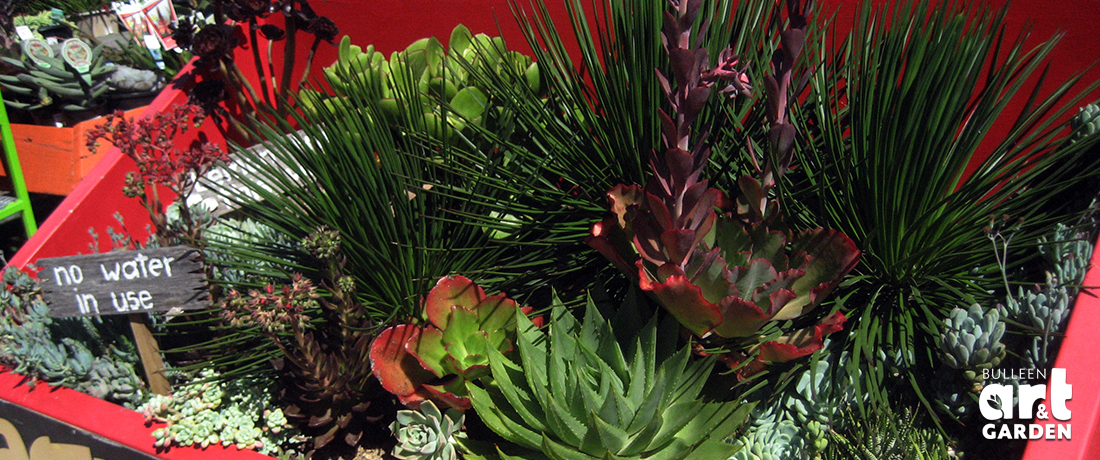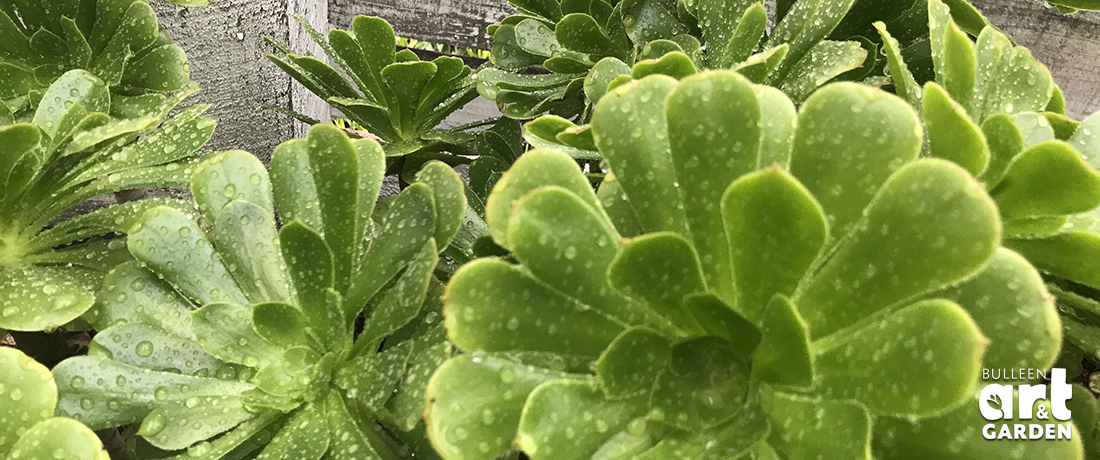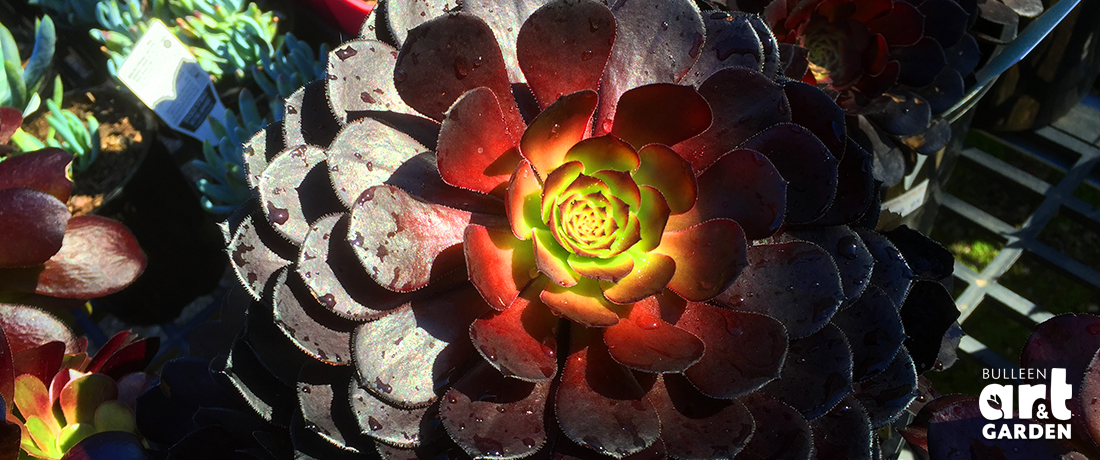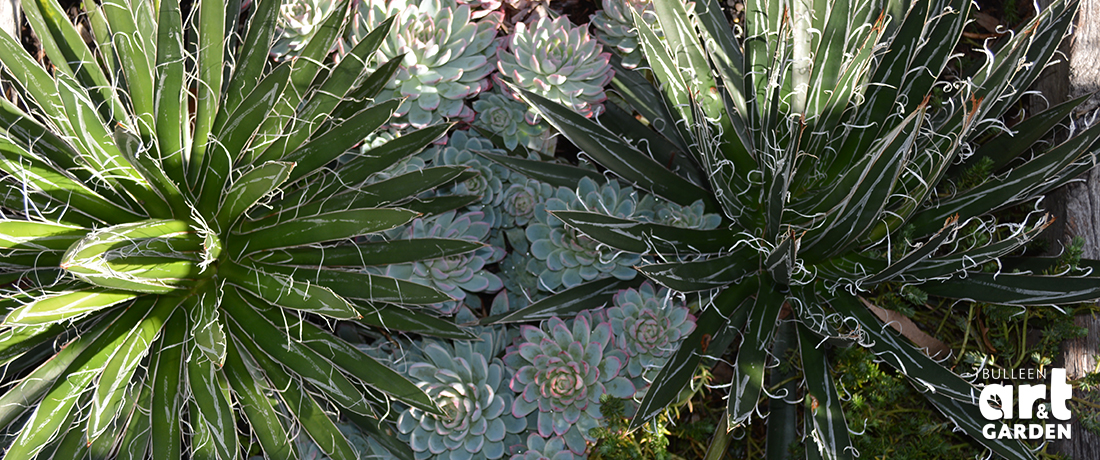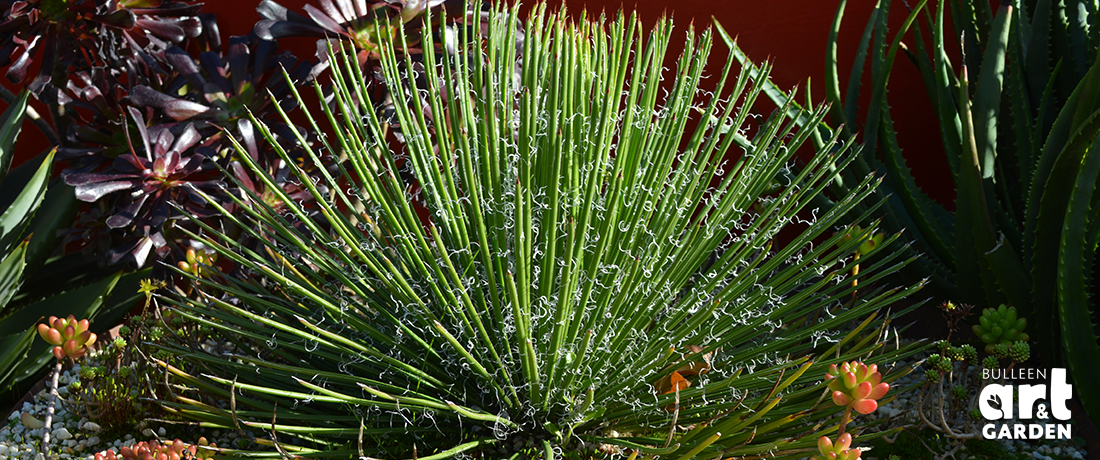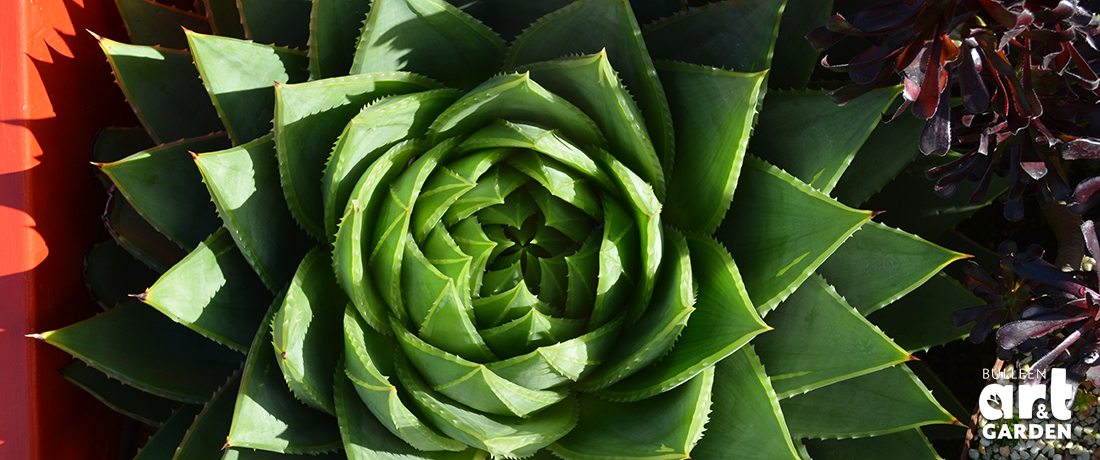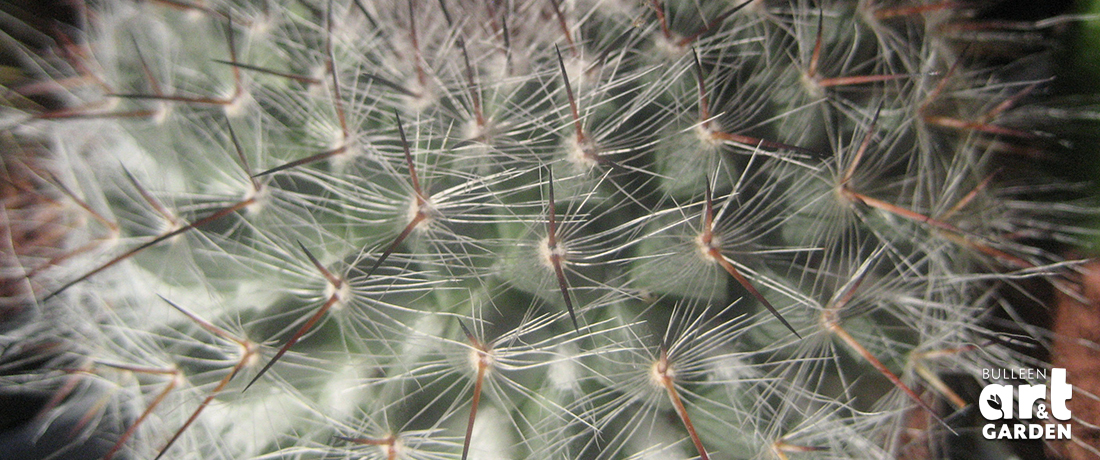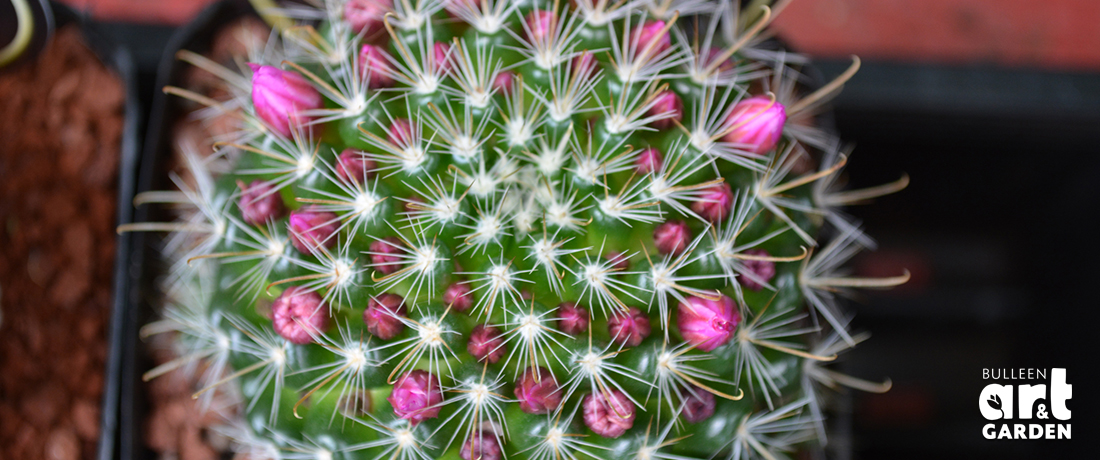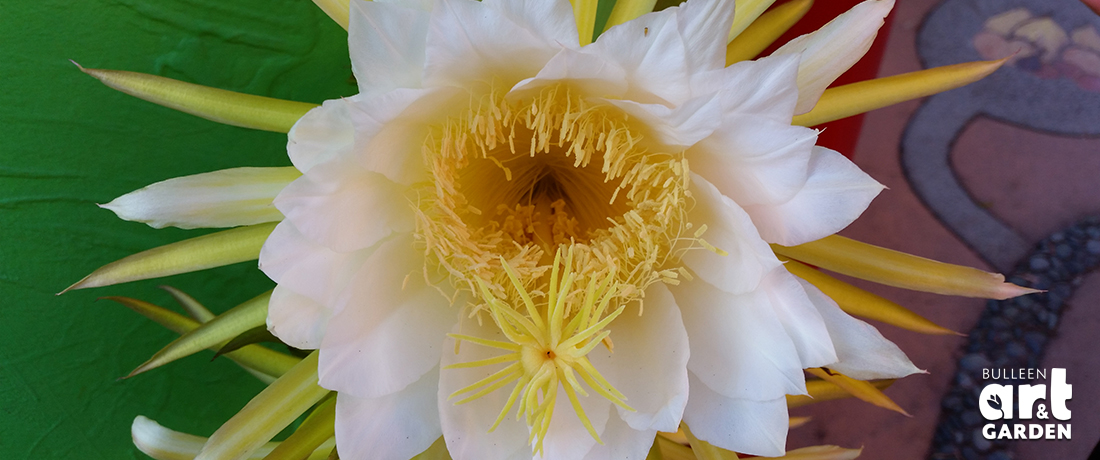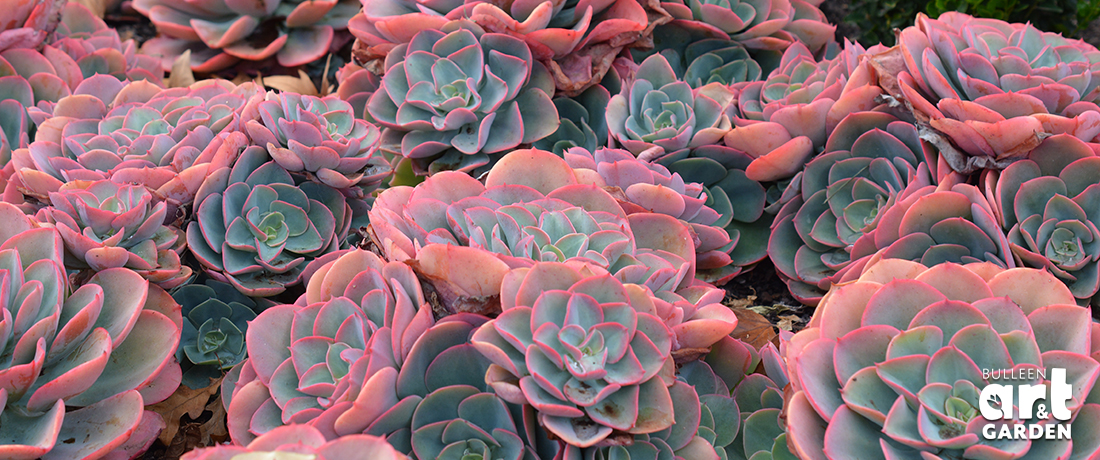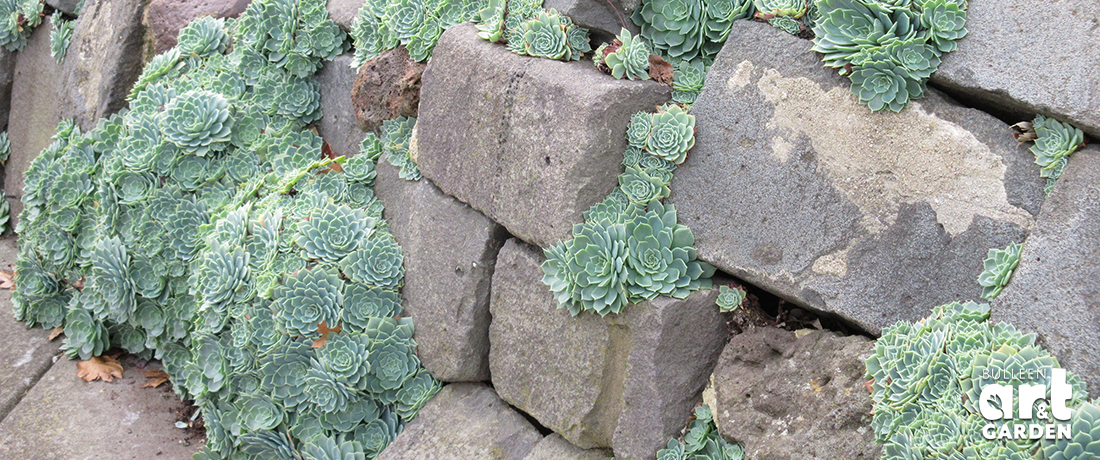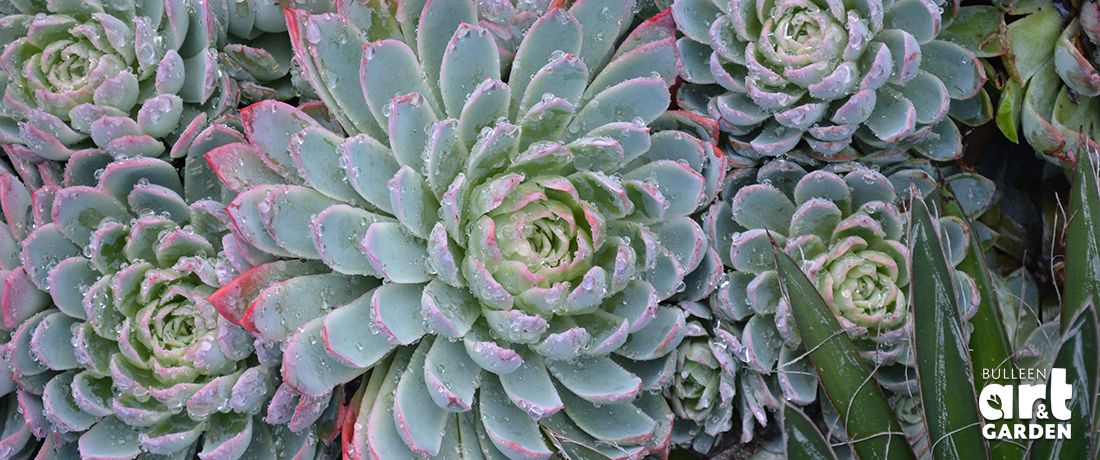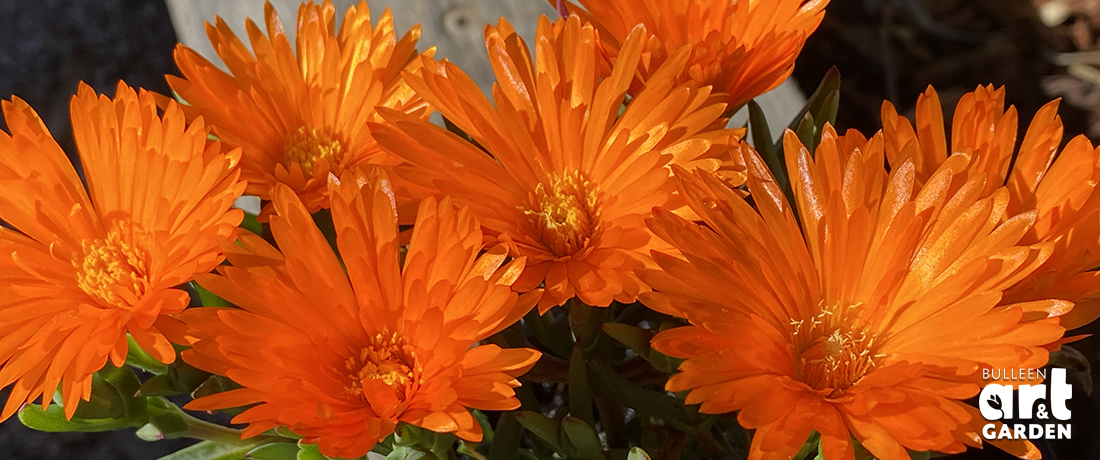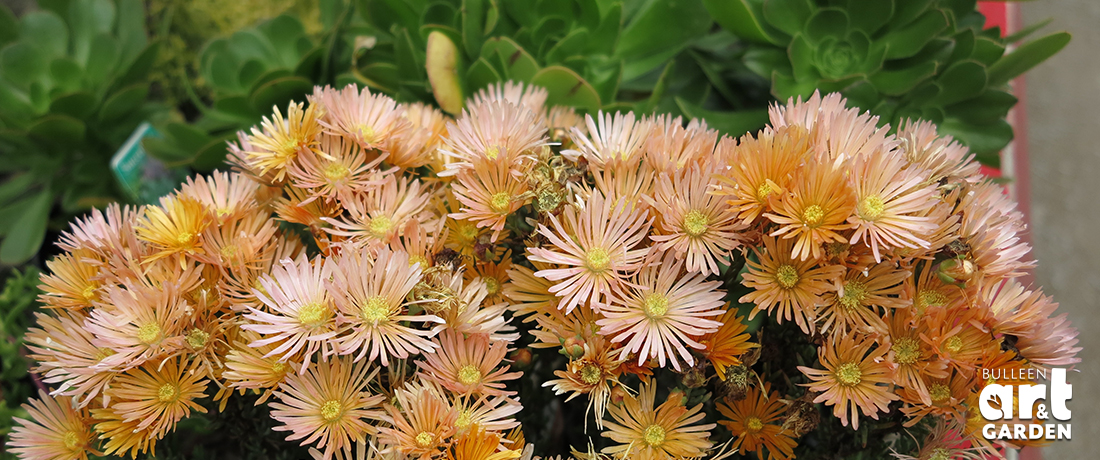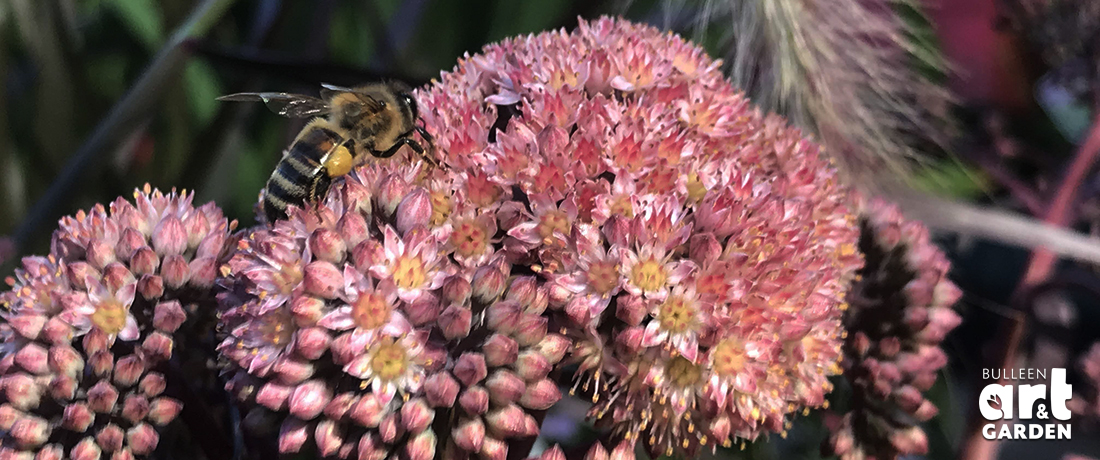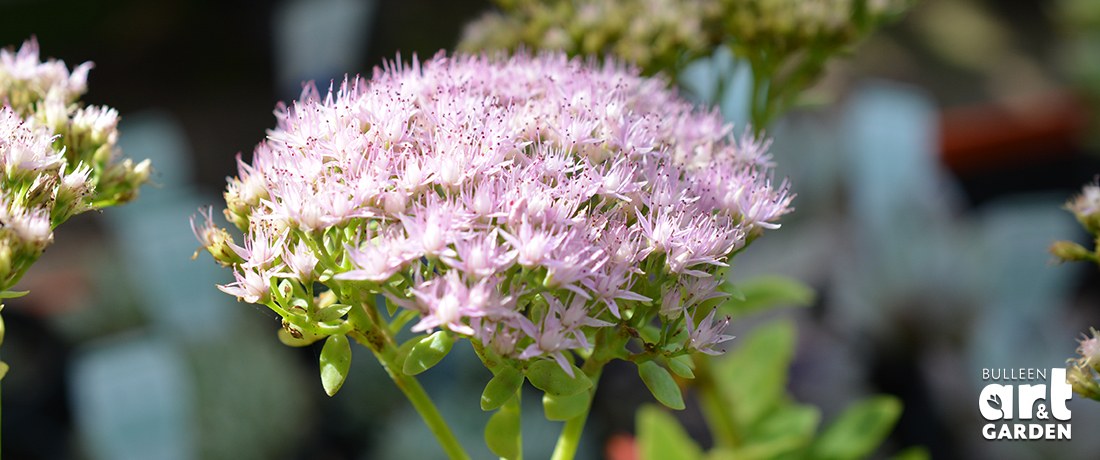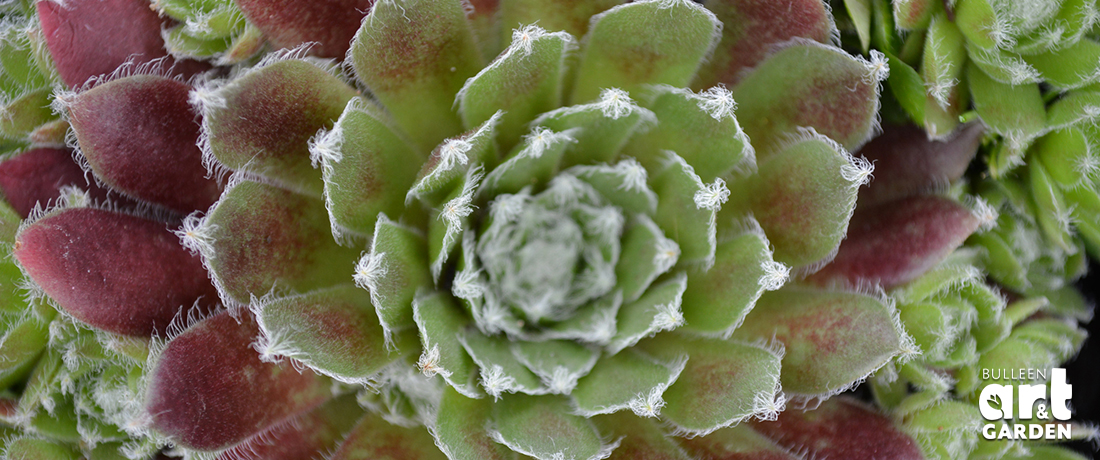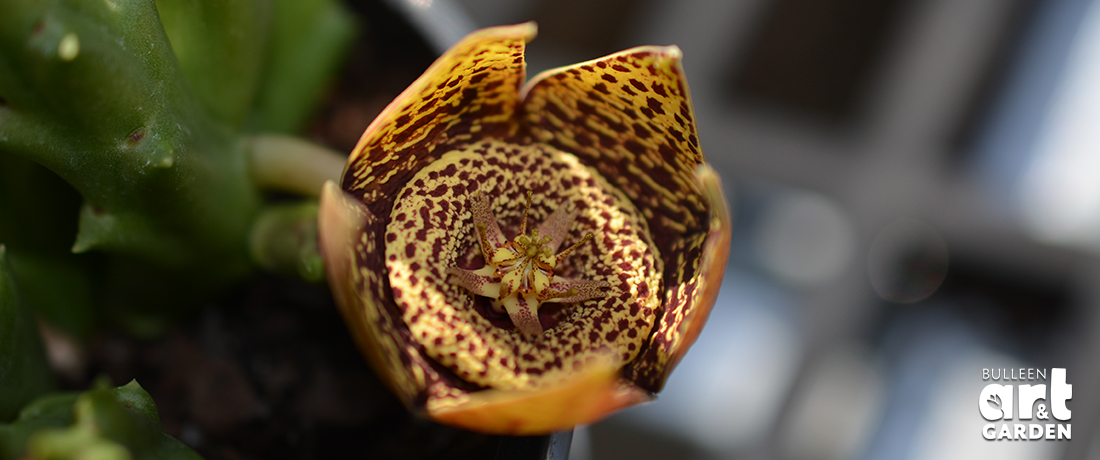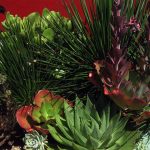Unbelievably ‘on trend’ at the moment – succulents are the botanical star of social media. More photogenic than George Clooney, they cover just about every look from cute and country rustic (think Hens and Chickens (Echeveria) tumbling out of an old boot) to chic and architectural. Add in the ease of growing and caring for succulents and their meteoric rise in popularity makes more sense. Minimal water and maintenance, plenty of sun and generally good drainage, these are very simple plants to grow. Neglect works for succulents. Some have beautiful flowers which is an added bonus, but their true strength is in their fleshy leaves.
Hardy versus soft succulents
Succulents come from all over the world and consequently vary greatly in frost, sun and drought tolerance.
Soft or tender succulents, while drought tolerant, are not cold tolerant. These include Echeveria, Crassula, Jade Plants, Tillandsia, Kalanchoe, Aeonium, Senecio, Haworthia, Sedum spectabile, Graptoveria, Pachyveria, Sedeveria, Aloe and Portulacaria. These will cope with a small overnight frost, they will look shabby, but will come back.
Cold Hardy succulents include: Sempervivum, Stonecrop, Mesembryanthemum and Agave. These thrive in alpine conditions, coping with prolonged heat and severe cold.
Designing with cacti & succulents
Cacti and succulents have sculptural qualities with many striking forms and textures. Often looking their best when planted in groups, you can mix cacti and succulents with other plants in garden beds but try to choose plants that will tolerate the same conditions. You are only limited by your imagination in creating interesting combinations of cacti and succulents. Also keep in mind that they grow well in pots allowing you to create interesting combinations with decorative pots and sculptures. Cacti and succulents also fit well with themes or styles of garden such as Santa Fe or Mexican styles, Minimalist or Modern gardens, stylised Arid gardens, Coastal gardens, Tuscan or Mediterranean gardens and many more.
Growing cacti & succulents
In pots
Cacti and succulents are ideal for pot culture, as they are mostly slow growing and require less water than other plants in pots. Just about any size or shape of pot may be used as long as it has drainage holes. For succulents use either an Australian Standards potting mix (not terracotta and tub mixes), or cacti mix, and for cacti it is best to use a cacti mix, or mix sharp sand with potting mix. Do not over pot cacti, this means do not pot small cacti into large pots. You will have to water cacti and succulents regularly over the warmer months, but you can allow the plants to dry out over winter. Cacti and succulents in pots may be fertilised with a slow release fertiliser, once a year.
In the ground
Firstly chose a site that is in a hot dry position. Check that the soil is well drained. Cacti can tolerate quite poor soils as long as the drainage is good. Cacti can be grown more successfully outside if the soil is mounded up to improve drainage. Rocks or screenings can be used as the base, covered with sand and soil. Plant the cacti into this and then mulch with stones, pebbles or gravel. Some succulents are suitable as low growing ground covers and can be grown between cacti. Cacti and succulents planted in the ground will only very occasionally require watering. Fertilising of most cacti is not required, however some succulents will benefit from a slow release fertiliser once a year.
When planting, group them together and set them apart from other plants. Mulch with graded bark, gravel, sand or pebbles to draw attention to them. Keep the backdrop simple such as evergreen shrubs, grasses, or an attractive wall. Position cacti and succulents in the garden to mark a point of interest, such as an entrance. (not too close to paths or entrances, those thorns can hurt!)
Cacti and succulent gardens are relatively low maintenance. Weeding the beds is the most time consuming job, and is one reason to maintain a thick mulch layer. Snails can munch on your succulents (see pic below) – preferring the large fleshy leaves of some of the Echeveras like Big Red, but generally are not too much trouble. Pick off, or apply snail bait. A gentle annual fertiliser application and the occasional summer water is about all you need to do.

Propagation
Succulents are particularly easy to propagate, and regular propagation of new plants from old ones will allow you to maintain the appearance of the garden. Succulents may be propagated from leaves or from stems. Simply break off a leaf or a stem with some leaves attached (such as a small rosette), and leave the piece on a window sill for two or three days until the cut end has dried (callused). In small pots filled with propagation mix, propagation sand or cacti mix, gently push the stem or the base of the leaf into the mix. You may need to hold the piece in place with some small stones. Keep the mix almost dry and place the pots where they get shade for most of the day. It usually takes from two to three weeks for the pieces to take root. Gradually you can move the pots where they get more sun. When the succulents have put on growth, transfer them to bigger pots or into the ground.
Mat forming succulents
These make excellent groundcovers. Some, such as Pig face, are used for their flower show. Others are used for foliage colour, such as Sedum Dragons Blood. The textural qualities can also be a great garden feature, such as Sedum acre. Plant on embankments and to soften the edges and corners of garden beds, particularly those along the edge of paths. They work really well mixed with other plants in pots or around rocks.
Rosette forming succulents
Smaller rosette forming succulents make excellent border or edging plants (eg. Echeveria glauca). Larger rosettes look good as a small focal point in mixed planting. Look great in pots either singly or in large pots with a mixture of other succulents. Giant Echeverias look great in urns with some trailing types around the edge.
Shrub-like succulents (like Jade)
Shrub-like succulents like Jade are often used to mark entrances, as a patio plant or even as an indoor plant provided there is sufficient light. They will tolerate more water than some other succulents, which is still comparatively little compared to other plants. They look best on their own in a decorative pot.
Spiky and architectural succulents
Use these as a feature and to provide formality to an informal planting. They are great for marking entry points, focal points, or along a straight axis. Plant randomly to create a focus in a dense, mixed planting. They suit many styles of garden… from modern minimalist to informal. They also look great individually in pots, either grouped together or standing alone as a feature.
Succulents for flower show
Succulents for flower show (like Sedum spectabile) are great when planted together for effect. They provide a horizontal dimension to a mixed planting. Old flower heads may be left on for winter interest.
Combine with flowering perennials and grasses.
Trailing succulents are great in pots, particularly urns. They work especially well in tall narrow pots, hanging baskets and wall pots.
Cacti and Succulents at BAAG
We stock many succulents in tube stock which is economic and ideal for mixing and matching in pots. We have the weird and wonderful like Stapelia variegata with its stunning flower complete with rotten meat odour, the dramatic Aeonium ‘Schwarzkopf’ and the funky Flapjacks.

